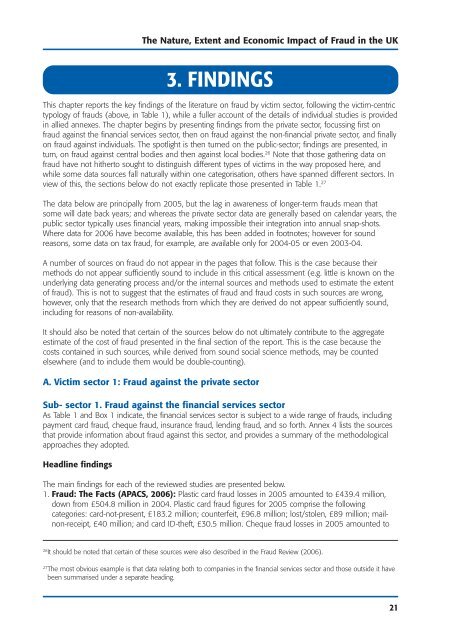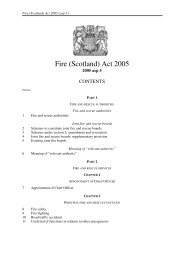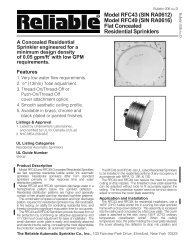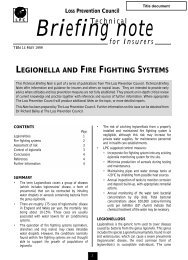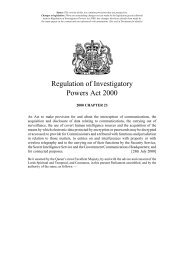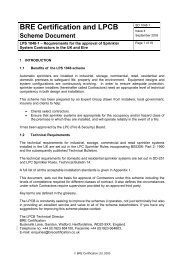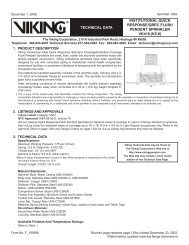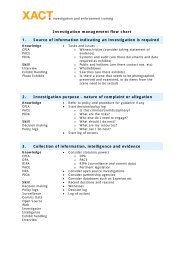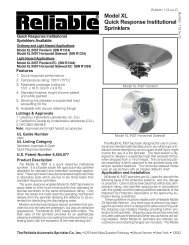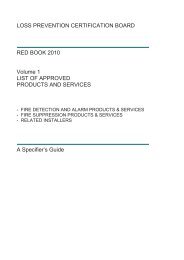The Nature, Extent and Economic Impact of ... - Cardiff University
The Nature, Extent and Economic Impact of ... - Cardiff University
The Nature, Extent and Economic Impact of ... - Cardiff University
You also want an ePaper? Increase the reach of your titles
YUMPU automatically turns print PDFs into web optimized ePapers that Google loves.
<strong>The</strong> <strong>Nature</strong>, <strong>Extent</strong> <strong>and</strong> <strong>Economic</strong> <strong>Impact</strong> <strong>of</strong> Fraud in the UK<br />
This chapter reports the key findings <strong>of</strong> the literature on fraud by victim sector, following the victim-centric<br />
typology <strong>of</strong> frauds (above, in Table 1), while a fuller account <strong>of</strong> the details <strong>of</strong> individual studies is provided<br />
in allied annexes. <strong>The</strong> chapter begins by presenting findings from the private sector, focussing first on<br />
fraud against the financial services sector, then on fraud against the non-financial private sector, <strong>and</strong> finally<br />
on fraud against individuals. <strong>The</strong> spotlight is then turned on the public-sector; findings are presented, in<br />
turn, on fraud against central bodies <strong>and</strong> then against local bodies. 26 Note that those gathering data on<br />
fraud have not hitherto sought to distinguish different types <strong>of</strong> victims in the way proposed here, <strong>and</strong><br />
while some data sources fall naturally within one categorisation, others have spanned different sectors. In<br />
view <strong>of</strong> this, the sections below do not exactly replicate those presented in Table 1. 27<br />
<strong>The</strong> data below are principally from 2005, but the lag in awareness <strong>of</strong> longer-term frauds mean that<br />
some will date back years; <strong>and</strong> whereas the private sector data are generally based on calendar years, the<br />
public sector typically uses financial years, making impossible their integration into annual snap-shots.<br />
Where data for 2006 have become available, this has been added in footnotes; however for sound<br />
reasons, some data on tax fraud, for example, are available only for 2004-05 or even 2003-04.<br />
A number <strong>of</strong> sources on fraud do not appear in the pages that follow. This is the case because their<br />
methods do not appear sufficiently sound to include in this critical assessment (e.g. little is known on the<br />
underlying data generating process <strong>and</strong>/or the internal sources <strong>and</strong> methods used to estimate the extent<br />
<strong>of</strong> fraud). This is not to suggest that the estimates <strong>of</strong> fraud <strong>and</strong> fraud costs in such sources are wrong,<br />
however, only that the research methods from which they are derived do not appear sufficiently sound,<br />
including for reasons <strong>of</strong> non-availability.<br />
It should also be noted that certain <strong>of</strong> the sources below do not ultimately contribute to the aggregate<br />
estimate <strong>of</strong> the cost <strong>of</strong> fraud presented in the final section <strong>of</strong> the report. This is the case because the<br />
costs contained in such sources, while derived from sound social science methods, may be counted<br />
elsewhere (<strong>and</strong> to include them would be double-counting).<br />
A. Victim sector 1: Fraud against the private sector<br />
Sub- sector 1. Fraud against the financial services sector<br />
As Table 1 <strong>and</strong> Box 1 indicate, the financial services sector is subject to a wide range <strong>of</strong> frauds, including<br />
payment card fraud, cheque fraud, insurance fraud, lending fraud, <strong>and</strong> so forth. Annex 4 lists the sources<br />
that provide information about fraud against this sector, <strong>and</strong> provides a summary <strong>of</strong> the methodological<br />
approaches they adopted.<br />
Headline findings<br />
3. FINDINGS<br />
<strong>The</strong> main findings for each <strong>of</strong> the reviewed studies are presented below.<br />
1. Fraud: <strong>The</strong> Facts (APACS, 2006): Plastic card fraud losses in 2005 amounted to £439.4 million,<br />
down from £504.8 million in 2004. Plastic card fraud figures for 2005 comprise the following<br />
categories: card-not-present, £183.2 million; counterfeit, £96.8 million; lost/stolen, £89 million; mailnon-receipt,<br />
£40 million; <strong>and</strong> card ID-theft, £30.5 million. Cheque fraud losses in 2005 amounted to<br />
26<br />
It should be noted that certain <strong>of</strong> these sources were also described in the Fraud Review (2006).<br />
27<br />
<strong>The</strong> most obvious example is that data relating both to companies in the financial services sector <strong>and</strong> those outside it have<br />
been summarised under a separate heading.<br />
21


